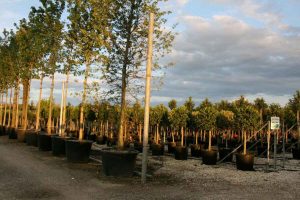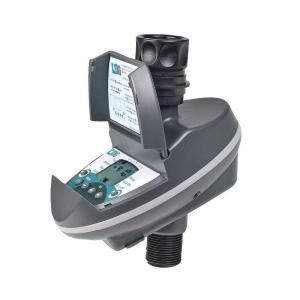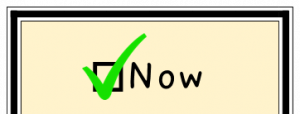Considering the life expectancy of a tree, purchasing a tree is a commitment. First, you want to pick a tree that will do well in Northern Colorado. The Front Range Tree Recommendation List is a good place to start. From the list, you can select trees based on their rating, google a few pictures of the trees, and come up with a short list of trees for your yard.

Then it’s time to go shopping at the nursery or garden center. Stick to your list and see what is available. Sometimes there will be dozens of trees of the same variety available and other times there may be only two or tree.
Spend some time inspecting the trees that are available with this checklist:
- Check the graft point. Many trees are “grafted.” This means the vegetative part of one tree is attached to the roots of another. This produces a stronger plant with good properties from both plants. The graft point will be a lump or ball near the base of the tree. Check to see that the bark has closed all around it, with no gaps. There definitely should not be any sprouts from the graft point. Not all trees are grafted. Don’t be afraid to ask the nursery salesperson if that tree was grafted.
- Look for one strong leader. Step back from the tree and look at the overall structure. You should be able to identify one central leader going straight up the center of the tree. The leader should also be the top point of the tree. Some types of trees are grown “multi-stemmed” and these won’t have a central leader.
- Avoid poor intersections. Some trees have a naturally upright, columnar structure. (The horticulture term for that is fastigiate (fast-i-gee-at), if you want to sound smart.) However, for most trees, branches along the main leader should have a whorl of branches at spaced intervals. When you’ve stepped back from tree, you should see structure that looks similar to the diagram below.
- Look for any other signs of trouble. If there is anything about the tree that you think is ugly, walk away. This may be scorched leaves or needles, marks on the bark, lumps or pinholes in the trunk, branches that have scrape marks or breaks, or evidence of poor pruning.
- Finally, if you can, check the roots. Pulling a tree from the pot isn’t always feasible. If the tree and pot are small enough, you can check for circling roots. If you’re buying a larger ball-and-burlap tree, you won’t be able to check the roots. The roots should reach the bottom of the pot, but not be literally growing in circles.

Once you’ve selected the tree and get it home, get it planted properly. Check these excellent resources for tips on planting a tree: Colorado State Forest Service and CSU Extension.
Trees are sold either by the size of the pot or by the measurement of their caliper. The caliper is the diameter of the trunk at 6 inches above the soil. The larger the tree, the more expensive. My general advice for trees is to buy the largest you can afford, with consideration for how large a hole you can dig.
Happy Gardening!



